Season Review: Red Ketchup Season One Part Two
Following the thrilling conclusion of ‘Red Ketchup’s’ Templar Saga, there’s nothing to do between now and the inevitable announcement of a second season but look back and reflect on the show’s first fabulous volley of violent cartoon capers, and count ourselves lucky to have existed at the same time as this show. There’s no point in going into all the specifics of ‘Red Ketchup’s’ delicious grandeur – that would be an epic rehashing that would fully take forever. So instead, let us consider just one of this show’s many, many strengths – the coterie of Canadian writers that have contributed content!
While ‘Red Ketchup’ has long been popular in French-speaking Canada, this production was pretty much the lovable maniac’s introduction to the English-speaking sector of society. It’s a big deal to try to take something you really love and show it to a gigantic group of people – there’s always the risk that they won’t love it like you love it. Translating a comic into an animated or live action show is notoriously tricky, as is translating a work of art from one language to another. But there is just so much love poured into this 20 episode adaptation of ‘Red Ketchup’ that it’s impossible to resist being pulled in. There are just so many different writers, spanning four decades, that contribute their own unique flavour to this show – it’s basically the seven layer dip of cartoons! And, much like a seven layer dip, each ingredient’s identity remains its own, perfect, distinct thing, while simultaneously blending together into the world’s finest of party foods. So get your metaphorical Tostitos out, because it’s time for a mental double dip into the second half of ‘Red Ketchup’s’ first season!
The story of ‘Red Ketchup’ starts at the end of the spirited seventies, when panel pioneers Réal Godbout and Pierre Fournier teamed up to create some iconic and irreverent sequential art together – ‘Red Ketchup’ was one of the products of that collaboration. At the bedrock level of this show’s brilliant writing are these two enfants terrible of Quebec’s bande dessinée scene. In addition to being the progenitors of the show’s source material, Godbout and Fournier both consulted on the show and have also been immortalized within the show through the characters of Pierre Fournier and Réal Godbout (both voiced by Pierre Simpson) – two French Canadian comic book creators most famous for their work on ‘Red Ketchup’ – the comic within the show based on the comic that, just by coincidence, exactly mirrors the lives of Red and Sally. Except for the detail that Sally has hooked up with a certain dictator, in multiple positions. Peter Plywood is also mysteriously absent as a character in the original comics, a detail that the fastidious FBI agent has definitely noticed. Godbout and Fournier were lifelong friends who brought equal parts social commentary, literary allusion, and maniacal humour to the comic that quite clearly permeates every episode of the show. These two played a pivotal part in propelling the province of Quebec’s sequential art scene into prominence, and now the animated iteration of ‘Red Ketchup’ exists as an English-language testament to their talent and contribution to Canadian comic art.
Then of course, there’s showrunner Martin Villeneuve, whose lifelong love of the comic was the driving force behind bringing this modern maniac of a Prometheus to the small screen. Villeneuve has made some truly lovely films – if you haven’t seen Mars & Avril, check it out, it’s amazing! Villeneuve grew up with ‘Red Ketchup’, and his reverence for the material he’s working with is evident. Underneath the madcappery and mayhemmery, there is an almost tangible sense of longevity to the finally realized animated iteration of ‘Red Ketchup’. Since he was first introduced in 1982 as a one-off character in the ‘Michel Risque’ comics, the rogue FBI agent Red Ketchup has captured the hearts of French-language Canada. Villeneuve was one such captive. Beyond being the series director and writing great episodes like ‘Ketchup on Fire,’ he also does the voice of Bill on the French version of the show.
Show co-developer and writer Willem Wennekers has already entered the upper echelon of off-beat Canadian animation with his work on the always weird and wacky ‘Doomsday Brothers.’ and on ‘Red Ketchup’ he’s a key contributor to the show’s conversion from a comic book that is both from, and therefore about, the 1980s, into an animated series that is set in the 1980s and reflects out modern society. A lot of pretty messed up stuff has happened in the world since Croc first published the first collection of Red Ketchup comics – ‘Seeing Red’, which tells, among other things, the tale of Red tangling with The Templars. The update had to be a subtle one – too many modern references spoil the period piece broth, as the saying goes. So when Kiki is using an FBI computer, the antiquated technology is funny to us today, because we all collectively run our society using handheld magic machines. But Kiki also points out to Red that the FBI has been using this emergent technology to listen in on people’s phones calls, something that should resonant with modern audiences. As a bonus side silliness, this scene also reveals how little Red really understands about what goes on at the FBI.
Another essential element in the conversion from comic to cartoon are the show’s writing staff – Emily Weedon, Ivy Johnson, and Laurie Elliot. The original ‘Red Ketchup’ comics are fairly heavy on Red-centric monologue-filled mayhem, and while the show does stay true to the spirit of senseless, state-sanctioned, slaughter at the hands of our titular hero, it also takes the time to flesh out a complex universe full of nuanced personalities for him to stomp around in. Plywood, Sally Ketchup, and Bill Bélisle all go on their own exciting, all new adventures that fit right into with classic ‘Ketchup’ crusades. Sally, in particular, is a well-written character with her own internal life – she struggles as much with the childhood trauma she shares with her brother just as much as she manages the art of aging gracefully while being a badass. Bill’s backslide into alcoholism is well rendered, and the extremely gradual development of Red’s friendship with Peter Plywood is character development worthy of the finest of buddy cop pictures. Even more one-note characters like Olga get to explore the conflicts that arise from wanting two completely opposite things at the same time. By the end of season 1, Olga is also deeply distracted by the Soviet Afghan War, which, from a historical stand point, fits in nicely with the whole time-travelling to the Crusades thing. Plot wise, these adventures of all these secondary characters always fits in snugly against the source material, creating a seamless final product.
Weedon, Johnson and Elliot are each responsible for writing some of the best episodes of the Templars Saga. Weedon was responsible for mid-season opener ‘Red Templar’ as well as ‘The Hunt for Red Titanic’, which was one of the weirdest episodes of the whole series so far, and also ‘Wenceslas the Red’, which is where Peter and Wencey’s wild and wonderful romance first began. Johnson is the writer behind ‘The Red Ketchup Triangle’ – the weirdest episode of the season. With very few changes, it could easily be a Rick & Morty episode. It’s got astral projection, gameshow aliens, the Bermuda Triangle, genuine heartfelt moments, metatextuality – it’s got it all! She also wrote ‘The Red Side of the Moon,’ and ‘The Guardian of the Ketchupocalypse,’ which are also really crazy episodes in their own right. Elliot penned ‘Full Metal Ketchup’ and ‘Red Pops Art,’ the first of which bring’s Jean Yoon’s Kiki into the mix – a crowd favourite and Red’s on-again, off-again lady friend and a crowd favourite, while the latter really captures all there is to love about the original comic book – wordplay, pop culture references, and violence! The source material currently powering ‘Red Ketchup’ may be fairly slight in volume (although word is all this excitement has Godbout working on a new ‘Red Ketchup’ story for the first time in years), but with such a capable creative crew, there’s no limit to where ‘Red Ketchup’ can go! Now all we need is an English ‘Red Ketchup’ omnibus to come out, and a million more seasons of this show!
And just to be clear, Fournier and Godbout are the refried bean and guacamole layers, Villeneuve is the sour cream, Wennekers is the shredded cheese, and Weedon, Johnson and Elliot are the diced tomatoes, jalapeños and green onion, respectively. That’s right, we were still doing the seven layer dip metaphor, the whole time.
See you next season, Red-Heads!


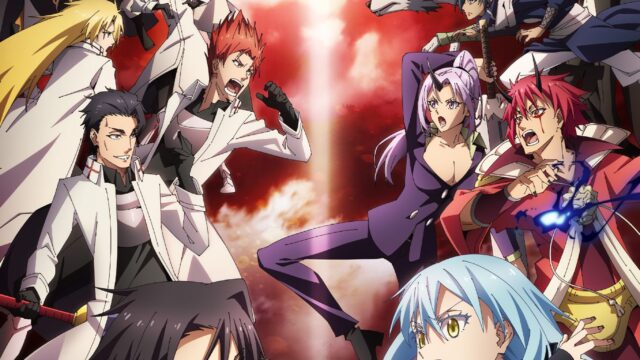
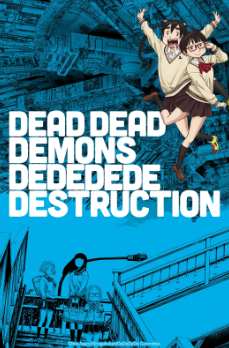

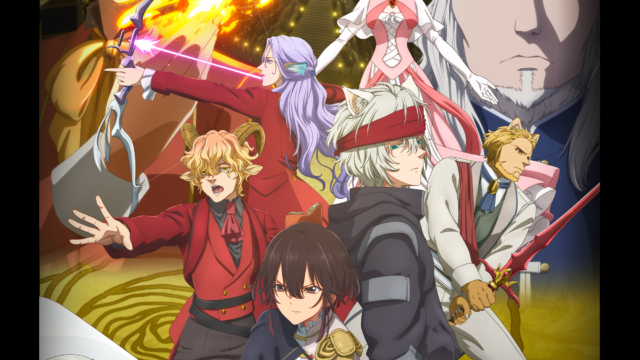



















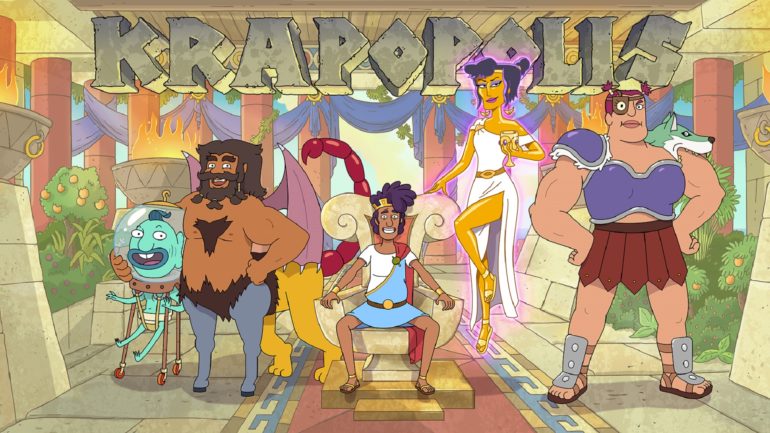

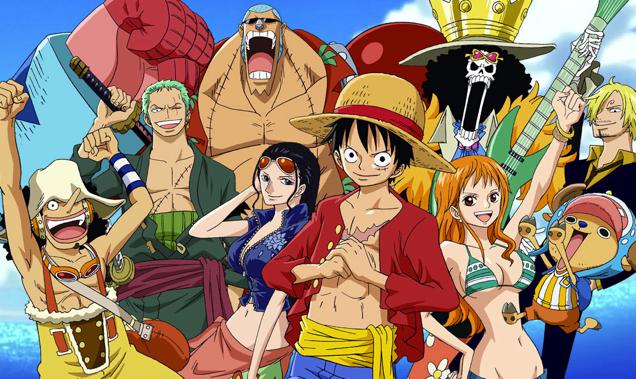
I hope this turns out to be another Gravity Falls-type show with an overarching storyline.